
First Aid Quiz: Can You Match These Terms With Their Definitions?
First aid term #1: Distal
A: Left of the heart
B: Remotely activated
C: Away from where a limb attaches to the body

Answer: C—Away from where a limb attaches to the body
As in, “To ensure Mira’s leg bandage wasn’t too tight, Ali checked her distal circulation.”
Here are the first aid kit essentials you should always have on hand.

First aid term #2: Bystander effect
A: Accident-witness trauma
B: Belief that someone else will take action
C: When rubberneckers block paramedics’ access to the scene

Answer: B—Belief that someone else will take action
As in, “Most witnesses to the accident succumbed to the bystander effect, but Nandini intervened.”
Don’t miss these natural disaster survival tips from a Canadian Red Cross volunteer.

First aid term #3: Ligament
A: Quiet place to lie down
B: Support bandage
C: Band of tissue that connects bones
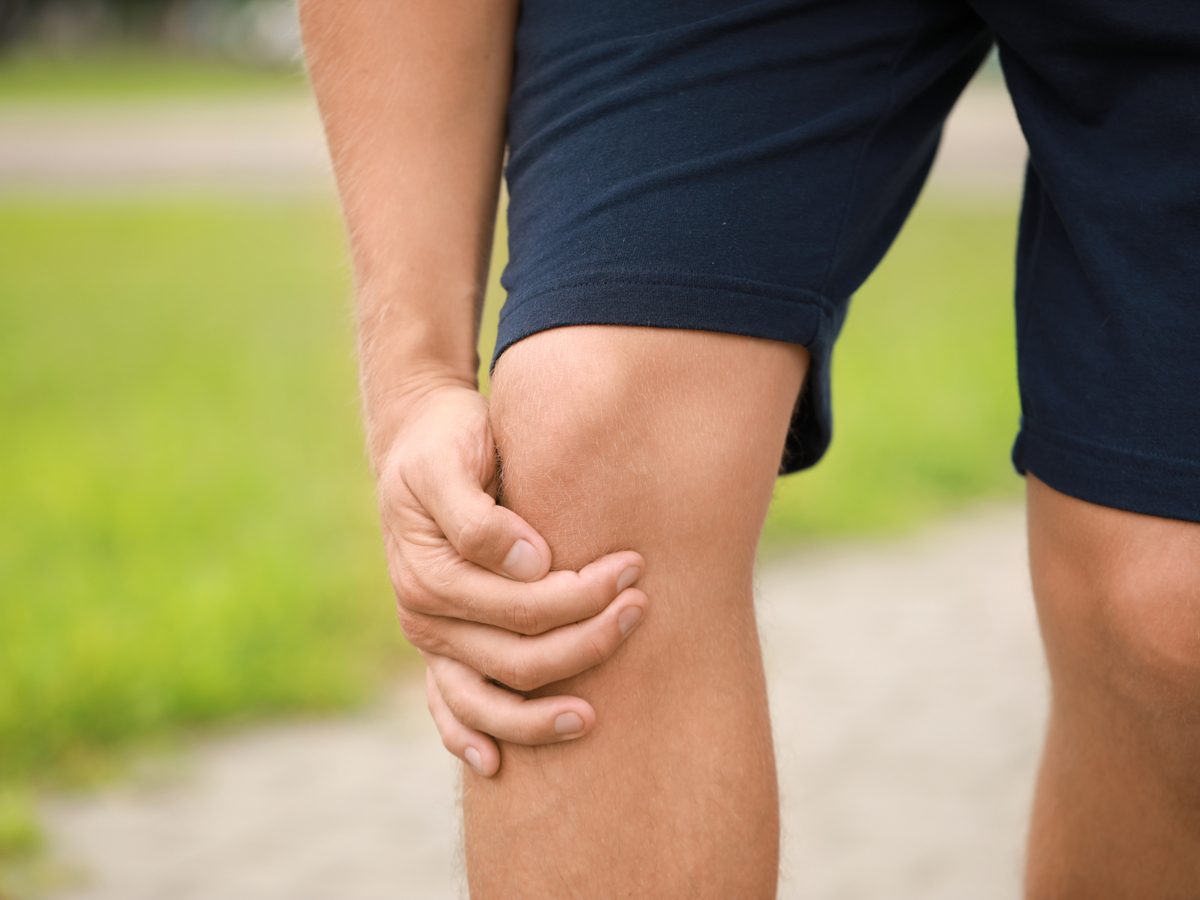
Answer: C—Band of tissue that connects bones
As in, “A sprain is a stretching or tearing of ligaments.”
Find out how to prevent knee problems at any age.
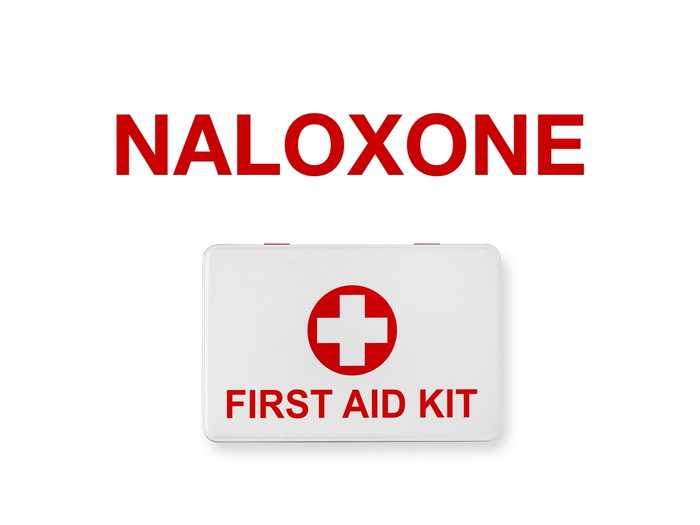
First aid term #4: Naloxone
A: Opioid-antagonist drug
B: Optical thermometer
C: Splint used to immobilize fractures

Answer: A—Opioid-antagonist drug
As in, “Naloxone can temporarily reverse the effects of an opioid overdose.”
Find out the medication mistakes that could be making you sick.

First aid term #5: Febrile
A: Suddenly feeble
B: With fever
C: Agitated

Answer: B—With fever
As in, “The baby was febrile, so Marcus removed the extra blankets.”
How well do you know these baby terms?

First aid term #6: Recovery position
A: Head-down position that can prevent fainting
B: Recommended position for an unconscious yet breathing person
C: Legal defence for people who caused harm while trying to help

Answer: B—Recommended position for an unconscious yet breathing person
As in, “To keep the man’s airway open, Nadia rolled him into the recovery position.”
Here are the essential steps of CPR everyone should know.
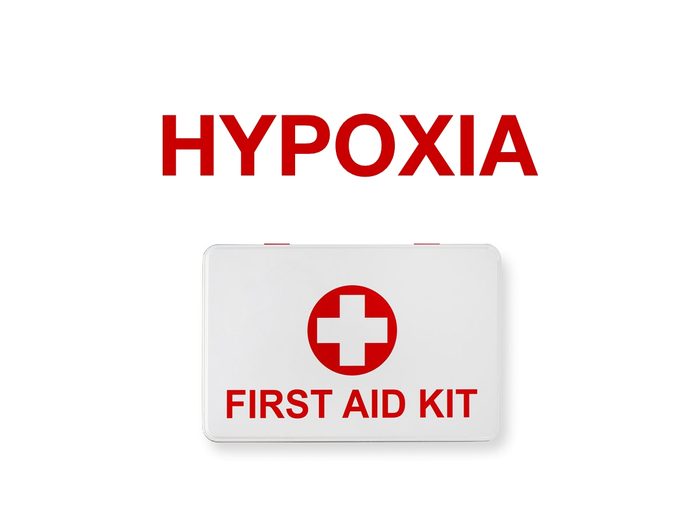
First aid term #7: Hypoxia
A: Nausea from shock
B: Oxygen deficiency in bodily tissues
C: Racing heartbeat
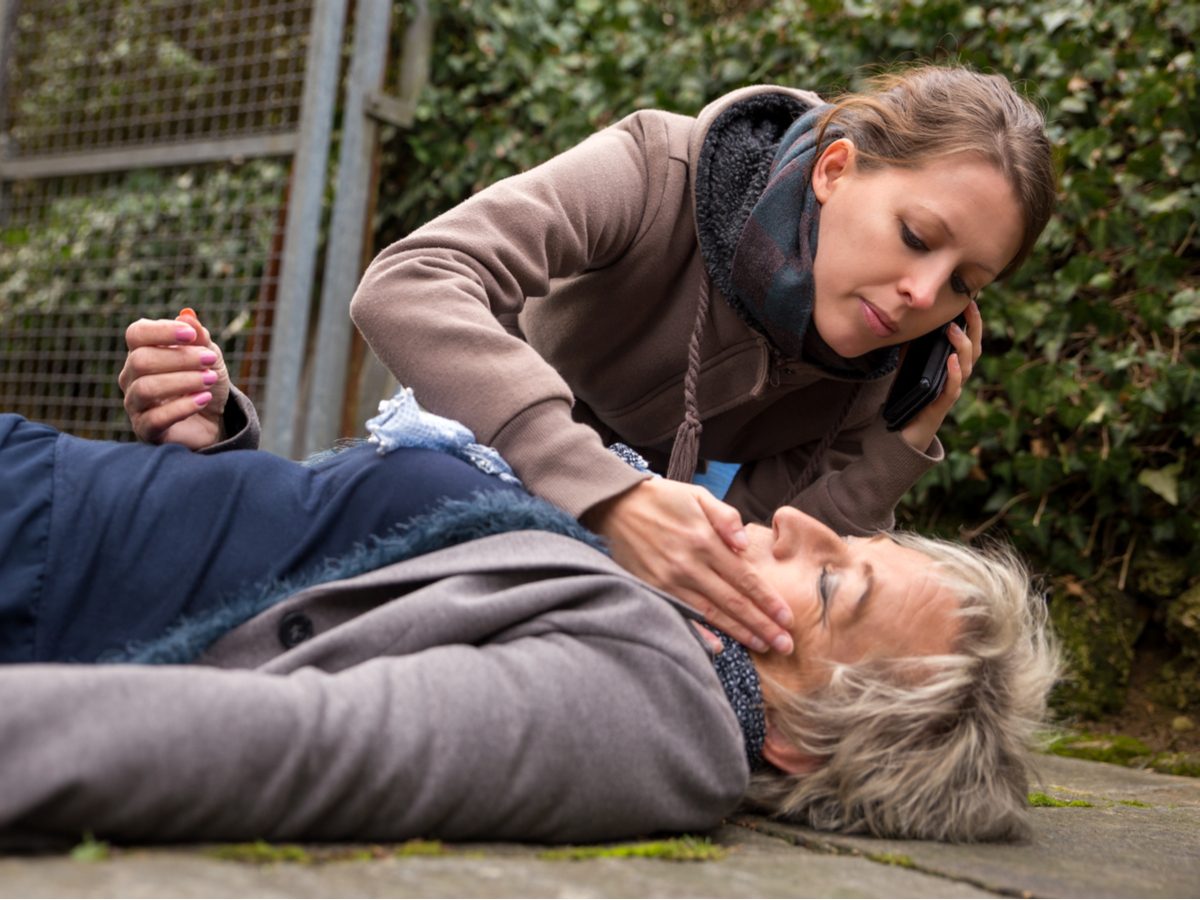
Answer: B—Oxygen deficiency in bodily tissues
As in, “Seeing that Zoé was showing bluish skin and other signs of hypoxia, Kris called 911.”
Check out these life-saving medical innovations coming to a hospital near you.
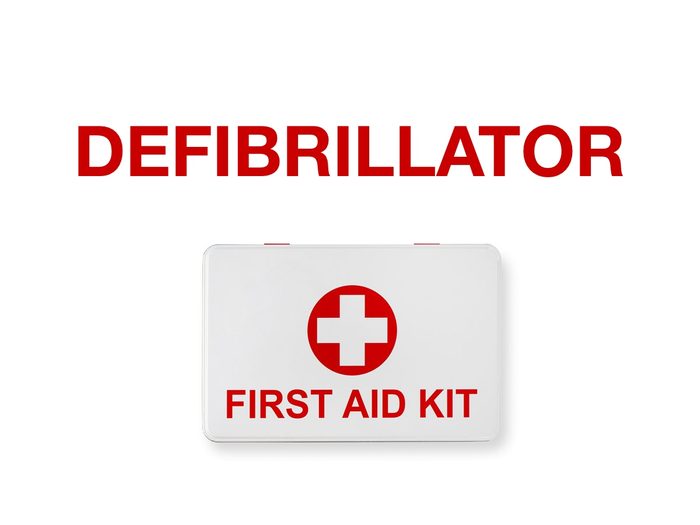
First aid term #8: Defibrillator
A: Carbon monoxide detector
B: Anti-anxiety medication
C: Apparatus for restoring an effective heart rhythm

Answer: C—Apparatus for restoring an effective heart rhythm
As in, “Defibrillators are often placed in public buildings in case of sudden cardiac arrest.”
These are the heart attack symptoms that are most frequently misdiagnosed.

First aid term #9: Calamine
A: Medicated bandage
B: Mineral supplement
C: Powder used in soothing lotions

Answer: C—Powder used in soothing lotions
As in, “Calamine can reduce the itching caused by poison ivy.”
Check out more home remedies for poison ivy.
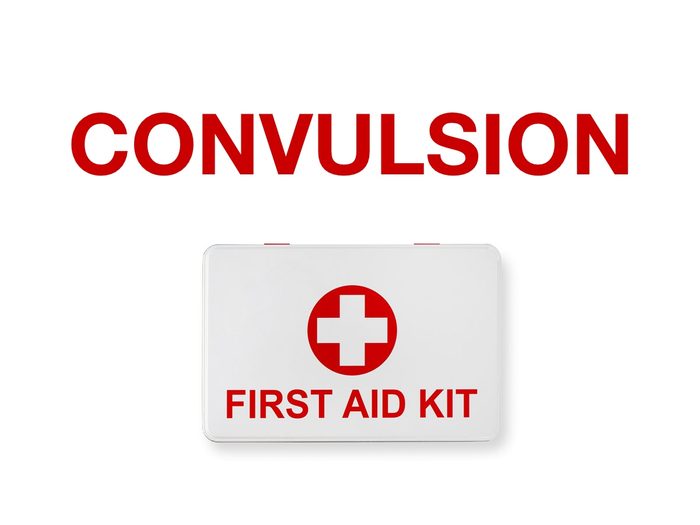
First aid term #10: Convulsion
A: Excessive blood loss
B: Abnormal, involuntary muscle contractions
C: Repulsion of a foreign object from a wound

Answer: B—Abnormal, involuntary muscle contractions
As in, “Izad protected Alberto from injury until his convulsions finally stopped.”
Don’t miss our ultimate roadside emergency guide.

First aid term #11: Crepitus
A: Grating noise caused by fractured bone friction
B: Reversible state of clinical death
C: Extreme loss of balance

Answer: A—Grating noise caused by fractured bone friction
As in, “When Alison heard the telltale crepitus, she knew she’d broken her arm.”
Follow our healthy home checklist to eliminate potential hazards in every room.
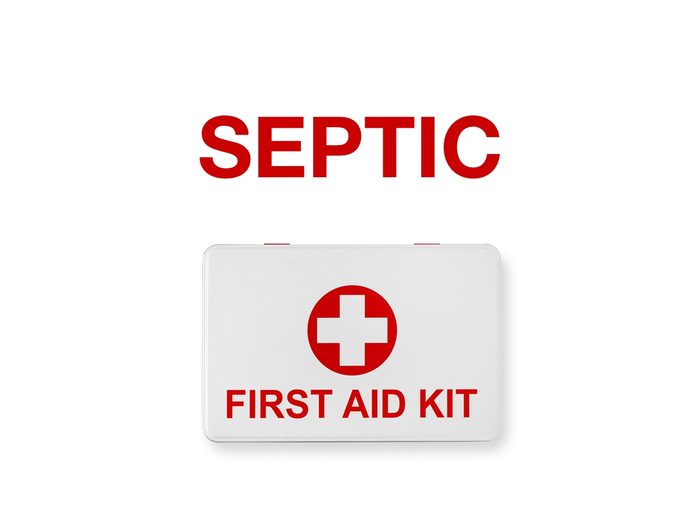
First aid term #12: Septic
A: Infected
B: Poisonous
C: Foul-smelling

Answer: A—Infected
As in, “To lower the risk of a septic wound, wash the area, apply antibiotic cream and cover it.”
Take a look back at the worst natural disasters in Canadian history.
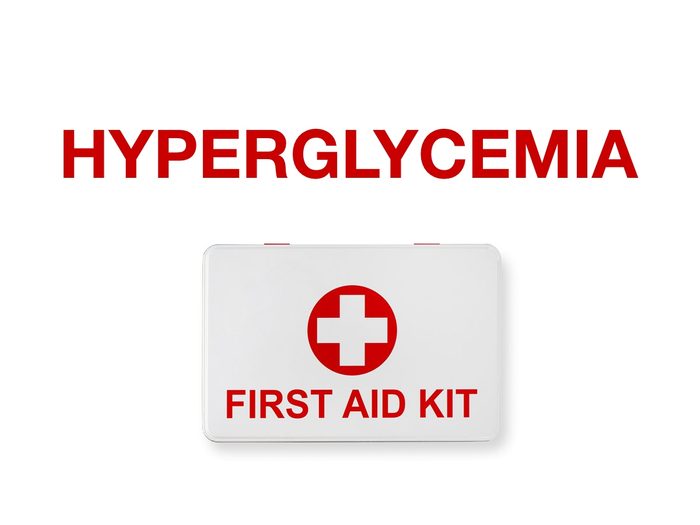
First aid term #13: Hyperglycemia
A: Excess blood sugar
B: Excess insulin
C: Sugar craving

Answer: A—Excess blood sugar
As in, “Medical ID bracelets can help bystanders recognize hyperglycemia and other diabetic emergencies.”
Here’s how to beat diabetes.
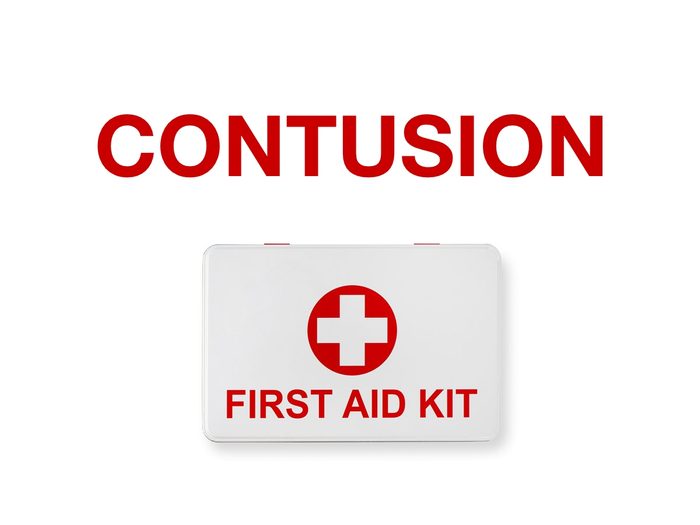
First aid term #14: Contusion
A: Bruise
B: Head injury
C: Mental confusion

Answer: A—Bruise
As in, “The acronym RICE (rest, immobilize, cool, elevate) is useful for treating contusions.”

First aid term #15: Anaphylaxis
A: Seepage of fluid under the skin
B: Severe allergic reaction
C: Nasal blockage
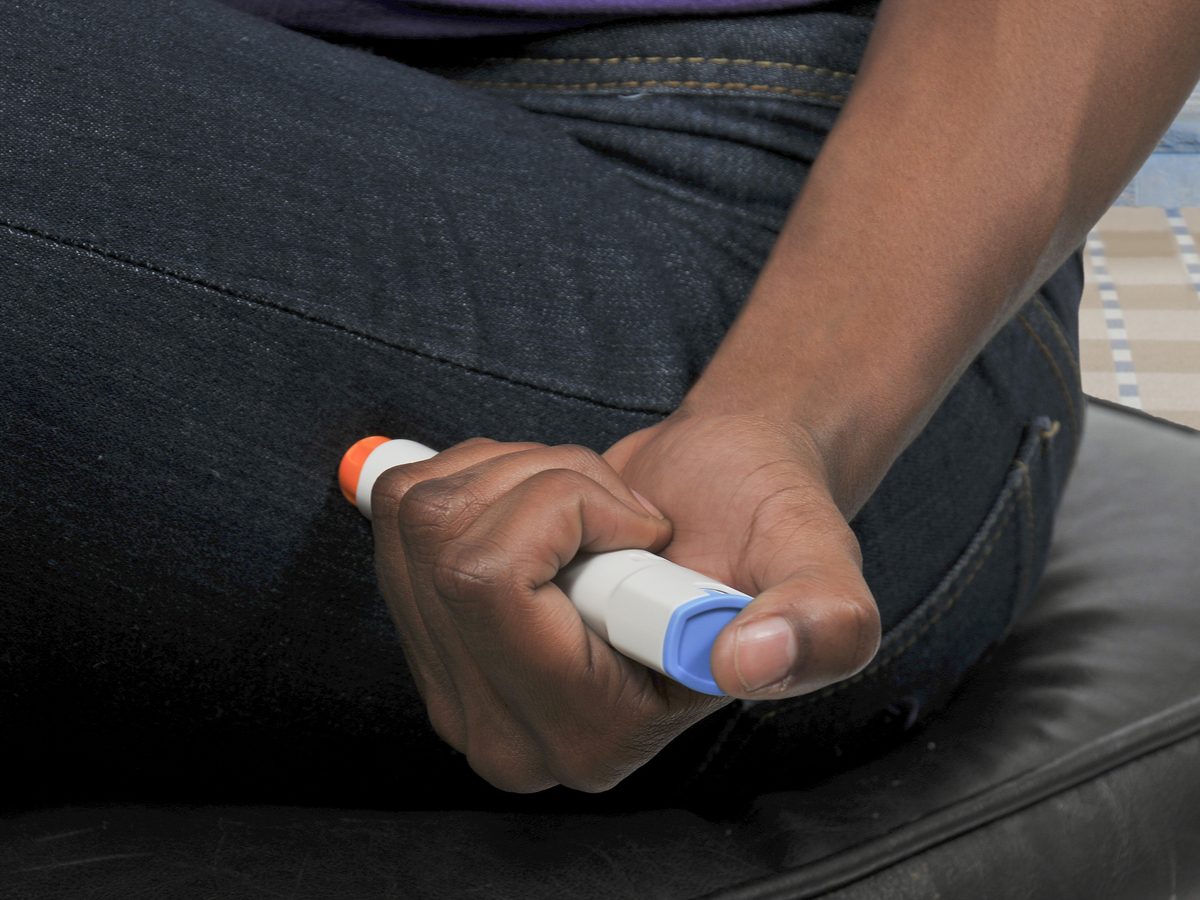
Answer: B—Severe allergic reaction
As in, “Ji-Yoon went into anaphylaxis but fortunately had an EpiPen.”
If you aced this first aid quiz, it’s time to test your knowledge of medical trivia.